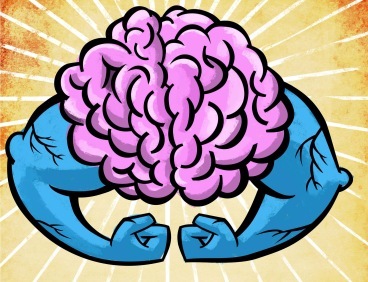U.S. scientists have discovered that when a person gets suspicious, certain part of the brain ‘lights up’, much like a lie detector, Science Daily reported Thursday.

Researcher at the Virginia Tech Carilion Research Institute found that concept of suspicion is linked to two regions in the brain: the amygdala, which controls fear and emotional memories, and parahippocampal gyrus, related to recognition of scenes and declarative memories.
The amygdale is closely related to a person’s baseline level of distrust of other people, and when a person becomes suspicious, his or her parahippocampal gyrus lights up, “acting like an inborn lie detector,” according to Read Montague, the lead researcher.
Scientists conducted an experiment where 76 ‘buyers’ and same number of ‘sellers’ carried out a bargaining game where they haggle over price of hypothetical product. The brain activities of each participant were monitored the whole time.
Researchers learned that the more uncertain a person was, the more active one’s parahippocampal gyrus became.
Montague said the findings may hold key to understanding paranoia and anxiety disorders. He pointed out that many people suffering from anxiety disorders tend to have increased activities in these certain parts of the brain.
From news reports
<관련 한글 기사>
누구나 머리 속에 ‘거짓말 탐지기’ 있다
미국 과학자들이 사람들이 뭔가 수상한 느낌을 받을 때 뇌 속에서 활성화되는 부위를 발견했다고 사이언스 데일리가 17일(현지시간) 보도했다.
버지니아 공대 연구진은 사람이 수상쩍은 느낌을 받을 때 서술기억 (사실에 관한 기억)과 장면 인식을 관장하는 해마방회가 ‘마치 거짓말탐지기에 불이 들어오는 것처럼’ 활성화된다는 사실을 밝혀냈다.
또한 사람이 기본적으로 다른 사람을 신뢰하는 정도는 두려움과 감정적인 기억을 관장하는 편도체 (amygdala)와 밀접한 연관이 있는데 ‘수상함’이란 감정은 이 두 부분에 의해 좌우된다고 한다.
연구진은 76쌍의 ‘구매자’와 ‘판매자’들이 서로 가상의 상품을 가지고 흥정을 하는 실험을 진행했다. 실험도중 참가자들의 뇌 활동은 지속적으로 관찰되었다.
그 결과 연구진은 사람들이 수상쩍을수록 그들의 뇌 안에 있는 해마방회가 활성화된다는 점을 관찰할 수 있었다.
연구를 주도한 리드 몬타규는 이 사실을 활용하면 강박증과 불안 증후군을 이해하는데 도움이 될 수도 있다고 설명했다.


![[Herald Interview] 'Amid aging population, Korea to invite more young professionals from overseas'](http://res.heraldm.com/phpwas/restmb_idxmake.php?idx=644&simg=/content/image/2024/04/24/20240424050844_0.jpg&u=20240424200058)
















